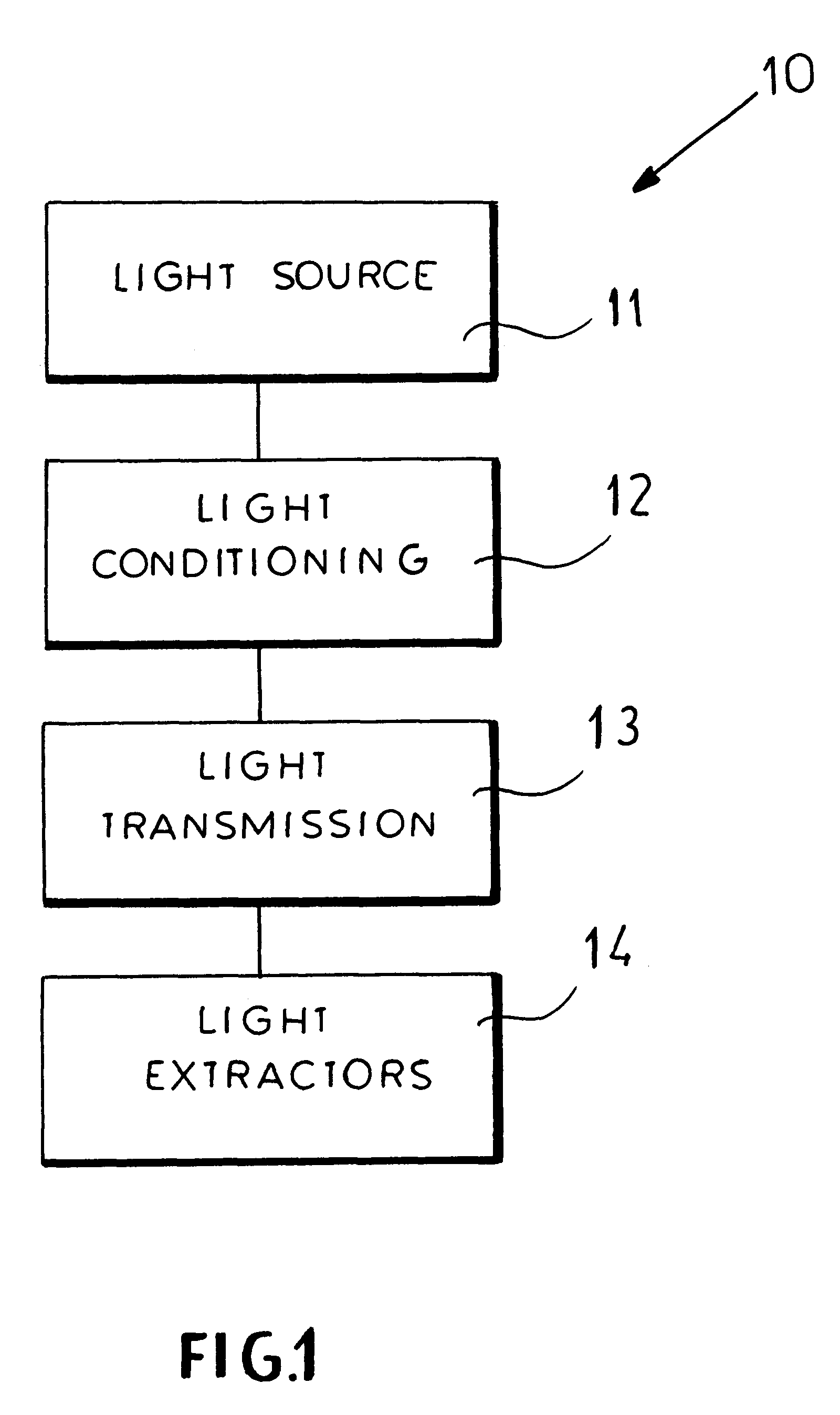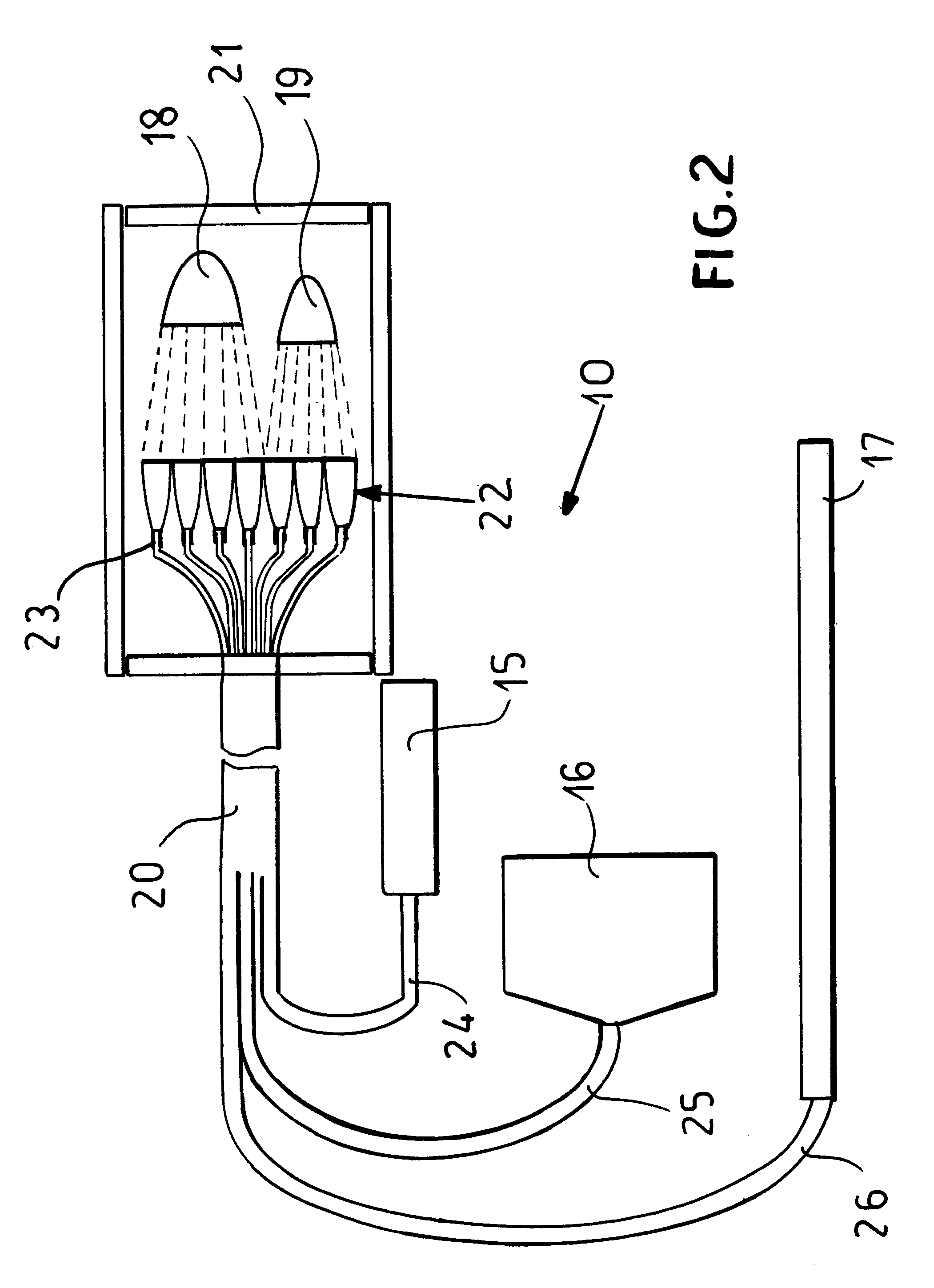Apparatus for optically enhancing chemical reactions
a chemical reaction and optical activation technology, applied in lighting and heating apparatus, cleaning using liquids, instruments, etc., can solve the problems of limited use of optical activation type processes, inability to achieve the effect of improving the efficiency of chemical reactions, and reducing the cost of optical activation
- Summary
- Abstract
- Description
- Claims
- Application Information
AI Technical Summary
Benefits of technology
Problems solved by technology
Method used
Image
Examples
example 2
Fractionation of Long Chain Polymers
For this example a reactor as described in FIGS. 3 and 4 is used, with quartz light extraction plates (about 2 mm thick from Heraus, Germany). The extraction zones are etched with hydrofluoric acid through a silk screened wax pattern. The wax pattern is then dissolved in benzene and rinsed with isopropyl alcohol. The light extractors are then coated with a cladding of THV-200P, a TFE / HPF / VDF Terpolymer (from the 3M Corporation) dissolved in MEK (methyl-ethyl-ketone). The light source used is a Cermax Xenon illuminator (from ILC Technology) with a variable wedge filter (1 nanometer bandwidth) in the range of 400 to 450 nanometers and blocking filters below 400 nanometers and above 450 nanometers. The system described in FIGS. 3 and 4 is also equipped with percolating orifices at the bottom of the vessel, through which hydrogen is slowly percolated into the reaction chamber. Unused hydrogen is collected at the top of the vessel and recycled through ...
PUM
| Property | Measurement | Unit |
|---|---|---|
| wavelength | aaaaa | aaaaa |
| thick | aaaaa | aaaaa |
| wavelength | aaaaa | aaaaa |
Abstract
Description
Claims
Application Information
 Login to View More
Login to View More - R&D Engineer
- R&D Manager
- IP Professional
- Industry Leading Data Capabilities
- Powerful AI technology
- Patent DNA Extraction
Browse by: Latest US Patents, China's latest patents, Technical Efficacy Thesaurus, Application Domain, Technology Topic, Popular Technical Reports.
© 2024 PatSnap. All rights reserved.Legal|Privacy policy|Modern Slavery Act Transparency Statement|Sitemap|About US| Contact US: help@patsnap.com










